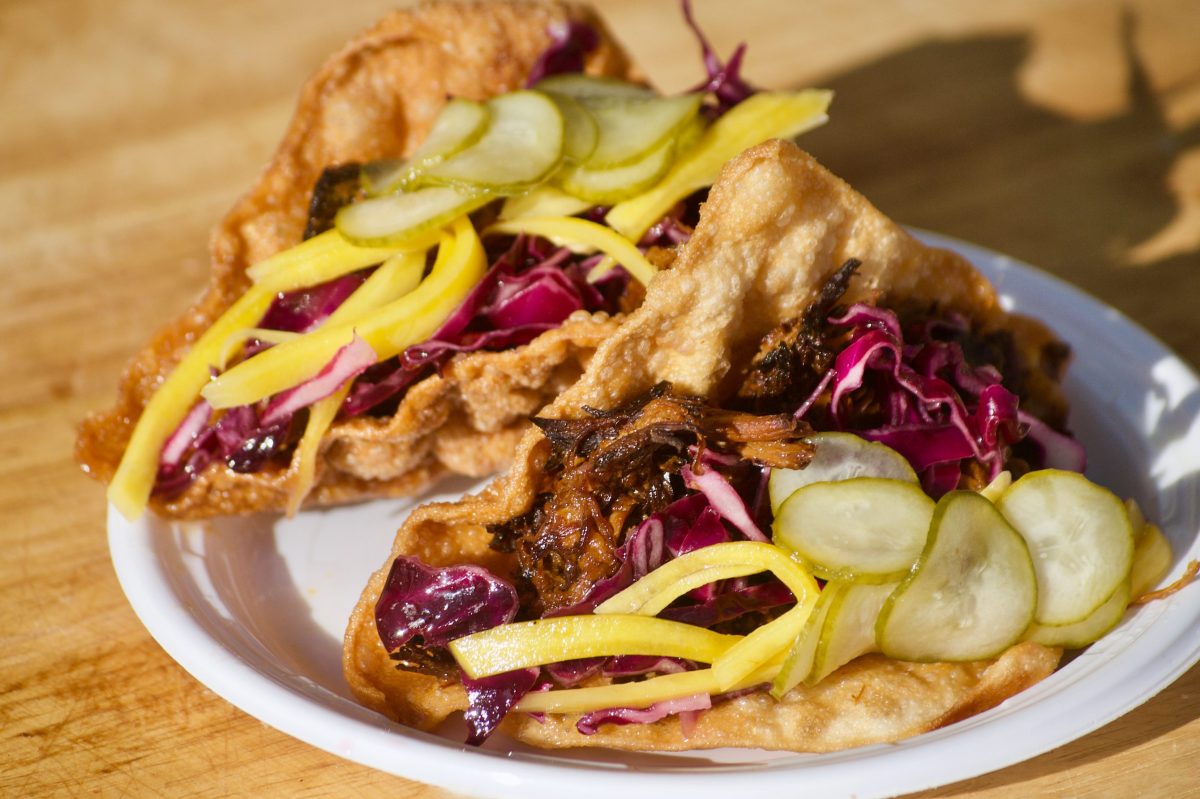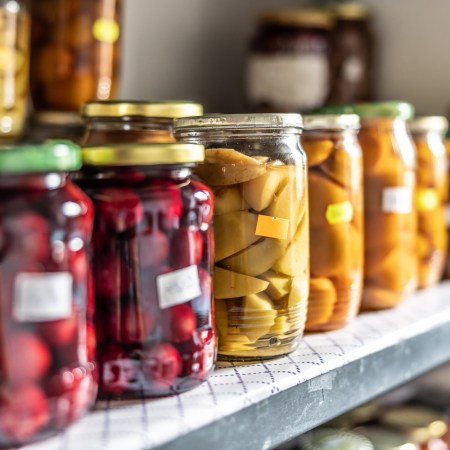Simultaneously a sauce, seasoning, cooking technique and dish, adobo originated in the Philippines and is treated in some circles as the unofficial national food. Typically prepared by simmering either pork or chicken in a blend of basic pantry items such as garlic, vinegar and soy sauce, adobo was developed to help cooked food keep without refrigeration, with different regions refining their own twists on the basic recipe over time.
Filipino-American chef Diana Manalang of Little Chef, Little Cafe in Queens grew up eating her mother’s adobo adaptation. She now offers multiple versions of the classic dish at her Long Island City eatery.
“My mom used to make a huge pot of adobo at least once a week. We’d live on leftovers until it was gone and then she’d go ahead and make another pot again,” Manalang tells InsideHook. “It’s one of those dishes that develops better flavor over time. It definitely is one of those dishes you could keep in the fridge for a really long time, especially because it’s cured in vinegar. It’s a dish that will hold really well if you don’t eat it all at once.”
While some chefs will add ingredients like coconut milk or coconut vinegar to their adobo, Manalang has incorporated more basic items like onions and brown sugar into her recipe. Following a night of cannabis-influenced culinary experimentation more than a decade ago, she also introduced deep-fried wonton shells.
“I wanted to start a food truck concept with a bunch of my friends about 15 years ago and we would do these underground dinners and pop-ups before it was really popular,” Manalang says. “We were also what you would maybe call stoners and drunks. One night we’re making egg rolls with a Mexican-style filling, because egg rolls are very popular in Filipino cuisine. I was like, ‘What if we turned it into a taco shell?’ So, we threw one in the fryer and shaped it using tongs, but the egg roll skin was a little too thin. Then we’re like, ‘What if we tried using a wonton shell to make a crispy taco shell?’ That’s where it was born.”
Fearing the meal wouldn’t be quite as pleasing after the munchies wore off, Manalang had some other chef friends try the dish. The non-traditional adobo take was a hit and became a staple family meal before eventually making its way onto the menu at Little Chef, Little Cafe, where it has proven popular — even with Manalang’s mother. “My mom was actually really skeptical of it, but when she came here to visit, she ate it almost every meal,” the chef says.
It isn’t required to be stoned before making Manalang’s pork adobo, but she does suggest allowing enough time for the dish to cook completely. “This is a dish that is actually more forgiving if you overcook it than if you undercook it,” she says. “Since you’re using a cut like pork shoulder or pork butt, you’re going to have to let it cook for a long time. That low-and-slow method is needed in order for those really tough protein muscles to break down. The longer you cook it, the softer it will get and the easier it will shred. If you don’t cook it long enough, you’re going to have tough pieces of meat. Definitely cook it for the recommended amount of time, if not longer.”
If your calendar (and storage area for leftovers) is relatively clear, Manalang’s recipe is below.
Diana Manalang’s Pork Adobo in Wonton Shells
Adobo Rub
- 2 tbsp brown sugar
- 1 tsp salt
- 1 tsp black pepper
- 1/2 tsp granulated garlic
Combine ingredients together in a bowl and set aside.
Pork Adobo
- 3 pounds pork shoulder or butt cut into 1-2 inch cubes
- 2 tbsp neutral oil (canola, avocado or vegetable)
- 1 small onion, finely diced/minced (or processed in food processor)
- 2 cloves garlic, minced
- 1/2 cup brown sugar
- 1/2 cup soy sauce
- 1 cup vinegar
- 1/2 cup water
- 1 tsp black pepper
- 2 bay leaves
Instructions
- Rub the pork with adobo rub and let sit for 10-15 minutes.
- Heat pan over medium-high heat. Once the pan is hot, add the oil.
- Sear the pork on all sides. (You may need to do it in batches.)
- Once the pork is seared, remove from the pan and set aside.
- Add onion and garlic to the pan and sauté until the onions are translucent.
- Add brown sugar and fully coat onion and garlic.
- Deglaze pan with soy sauce, vinegar and water.
- Add pepper and bay leaves.
- Cover and bring sauce to a boil, then lower heat to a simmer.
- Add the pork back into the pan and turn the heat to low. Allow braising until meat is fork-tender. If continuing to cook on the stovetop, it will take about one hour for each pound of pork. (If transferring to an instant pot, pressure cook for 90 minutes — allow it to naturally release steam.)
- You can serve as is, over rice or shred the meat for wonton tacos, quesadillas and sandwiches.
Fried Wonton Taco Shells
- Frozen wontons (there are around 40 in a 12oz pack), defrosted
- Neutral oil for frying, e.g. vegetable oil
- Taco shell press (like this one)
Instructions
- Heat the oil in a deep fryer or a deep enough pan to submerge the taco shapers to 350 F.
- Place one wonton wrapper in the taco press and secure it in place.
- Lower it carefully into the oil and fry for 2-3 minutes until golden brown.
- Remove and rest on drying racks over a sheet pan to cool.
- Repeat with remaining wrappers.
- Any unused fried wontons will keep for 3-5 days in an airtight container.
Every Thursday, our resident experts see to it that you’re up to date on the latest from the world of drinks. Trend reports, bottle reviews, cocktail recipes and more. Sign up for THE SPILL now.
























